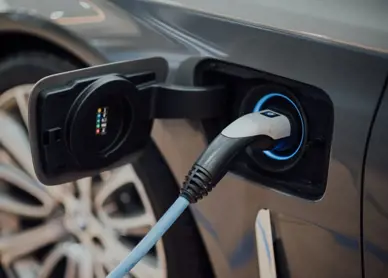EV Charging
Home Charger Installation
Frequently Asked Questions as a tenant of Trust Housing Association, you might be considering charging your electric vehicle (EV) at home. Below are answers to some of the most commonly asked questions about installing home charging points.

Frequently Asked Questions
A: Yes, you will need permission from Trust Housing Association as the property owner. Additionally, if you are eligible to claim a contribution through the Government-backed Domestic Charge Point Funding Scheme, permission is required. If upgrades to your existing equipment, such as the consumer unit, are needed, these will be addressed through our repairs procedure. You will be informed if any of these repairs are chargeable.
A: To install an electric vehicle charger at your home, you’ll need written permission from us. Please contact us to request an Alterations & Improvements Application Form. You can do this by emailing info@trustha.org.uk or calling 0131 444 1200 or 01698 377 200. We’ll send you the form which must be completed and approved before any work begins.
A: The tenant is responsible for maintaining the electric vehicle charger after it has been installed. Regular upkeep ensures the charger operates safely and efficiently. The electrical setup will be inspected every five years as part of Trust’s Fixed Wire Electrical Testing Programme.
A: Yes, permission will only be granted if you already have a dropped kerb and hard standing in place.
A: No, permission cannot be granted for flat residents because you would need legal entitlement to a parking space. Charging cables cannot be laid across public land, such as pavements, even temporarily.
A: Your charger should be as close as possible to where you usually park your car. It must not face the highway or be within two metres of it. The charger also needs a dedicated connection to your consumer unit to ensure sufficient power.
Check the length of the charging cable before purchasing a charger to make sure it reaches your vehicle. Avoid positioning the cable in high-traffic areas, as it could become a tripping hazard.
A: The installation must be done by a skilled and registered professional under a competent person’s scheme. The charge point must include an RCD (Residual Current Device) and be connected to a supply that can handle its full capacity. The installer must also notify the relevant Distribution Network Operator (DNO) about the installation to avoid any power quality issues.
A: You must provide evidence of the company’s registration with SELECT or NICEIC. If this cannot be provided, a Grade Card must be submitted as proof that the installer is approved/qualified to install the EV Charger. After permission is provided by Trust, but before installation goes ahead, you must provide evidence to Trust that the Distribution Network Operator (DNO) has provided permission for the EV charger to be installed.
A: Upon completion, you must submit a copy of the Electrical Installation Certificate, details of the charger’s make and model, and a clear photo of the installed charger. This certificate confirms that the charger has been installed to the appropriate safety standards. If you fail to provide us with an EIC within 30 days of completion of the install we will arrange for an approved Electrical Company to attend your property and remove the EV charger, all costs involved with this will be recharged to you. Proof of notification to the Distribution Network Operator (DNO) must also be provided.
After the installation, the electrical setup will be inspected every five years as part of the Fixed Electrical Testing Programme.
A: If you decide to remove the charger, government regulations require you to remove the charging point and restore the area (wall or ground) to its original condition as soon as possible.
A: No, it is illegal to run cables across public highways under the Highways Act 1980. This poses a safety hazard for pedestrians.
A: You have several alternatives:
- Use public charging networks
- Charge at your workplace (if available)
- Share a charger with friends or family
A: Tenants of Trust Housing Association may be eligible for compensation for certain improvements made to their property under the Housing (Scotland) Act 2001. While the Act doesn’t specify each compensable improvement, it provides general guidelines that include upgrades such as heating, plumbing, security measures, and energy efficiency. An EV charger could potentially qualify for compensation, provided the following conditions are met:
- Landlord’s Permission: Written approval from your landlord is required before installing any improvement, including EV chargers, which often involve electrical or structural changes to the property.
- Lasting Improvement: The improvement should add long-term value to the property by enhancing its functionality or energy efficiency, continuing to benefit the property after the tenancy ends.
To claim compensation, submit a written request to Trust Housing Association within the period starting 28 days before your tenancy ends and ending 21 days after the tenancy concludes. Your claim should include:
- Your name and address,
- Details of the improvements made,
- The cost of each improvement (with copies of receipts),
- The start and completion dates for each improvement.
Please note that we may also wish to inspect the improvements as part of the claims process.
